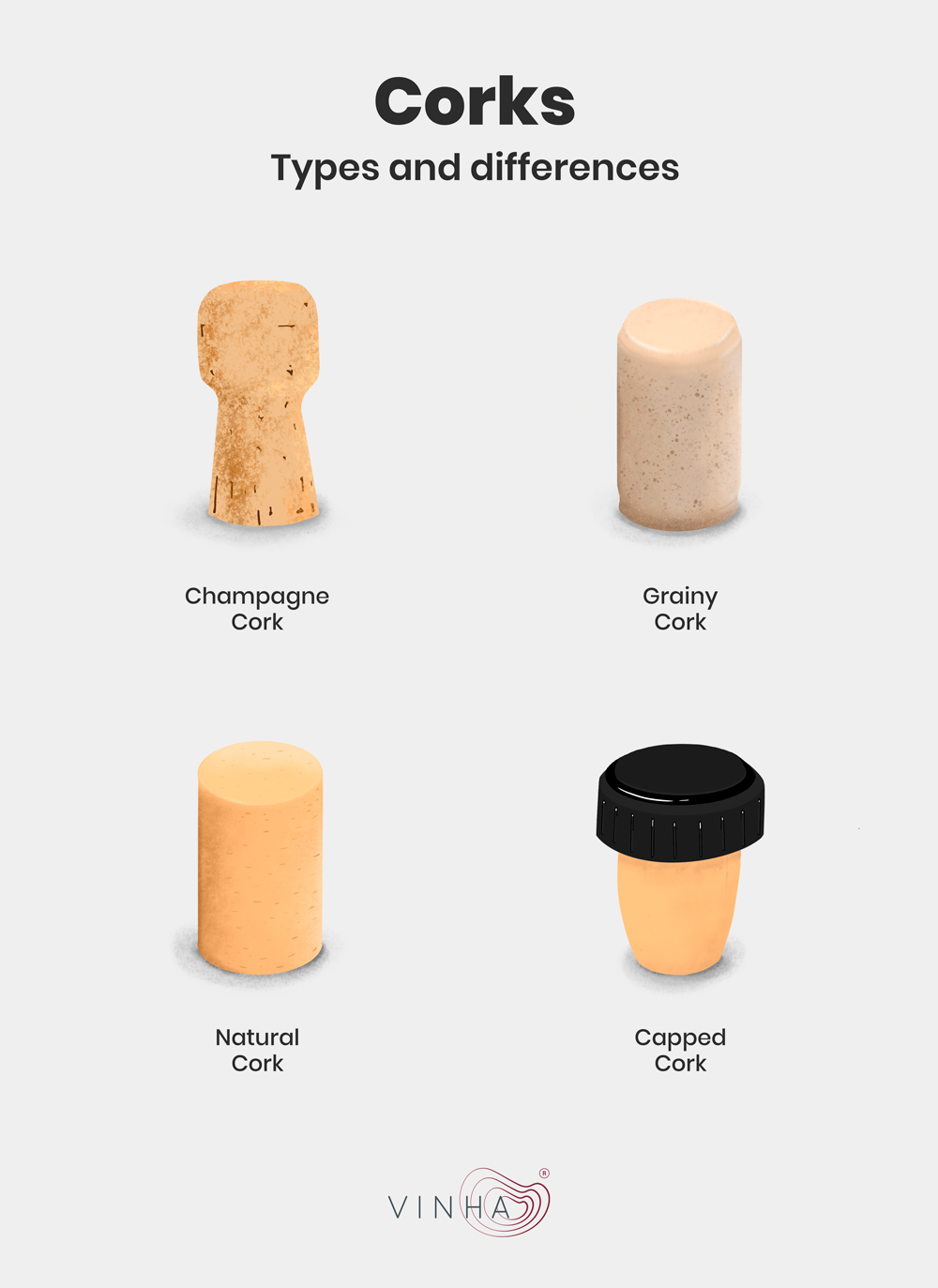
A bottle of Wine would not be the same without its cork.
The distinctive sound of the bottle opening with the corkscrew raises the whole experience of its consumption in a romantic candlelight night. However, the main function of the cork is not to create the perfect environment, but to ensure a good seal of the Wine inside the glass bottle. Here, we show 4 types of cork and their characteristics.
Champagne Cork
As the name implies, this type of cork is suitable for sealing bottles of Champagne and Sparkling Wine. Its shape is quite different from a traditional Wine cork and its diameter is superior. This characteristic is crucial to withstand the high pressures present in these bottles, which then translate into the characteristic firing of this type of Wine.
Grainy Cork
Grainy Corks are characterized by the agglomeration of cork surpluses (granulates) from the production of natural corks. They guarantee the perfect seal for bottles of high rotation wine and lower monetary value for a maximum period of 2 years.
Natural Cork
The Natural Cork allows the perfect evolution of the Wine without losing its unique aroma. The reduced level of oxygen inside the bottle allows the Wine to age with the desired quality. In addition, the natural cork is ideal for sealing the wine as it adapts to all irregularities of the bottleneck, even if the glass dilates or contracts with the temperature differences.
Capped Cork
Made up of a piece of cork and a piece of plastic, the capped cork is used with bottles of high alcoholic beverages such as Port, Liquor, Whiskey and Moscatel de Setúbal. Since none of the drinks mentioned is to be consumed at one time, this type of cork becomes very practical for its reuse.
Cheers!

